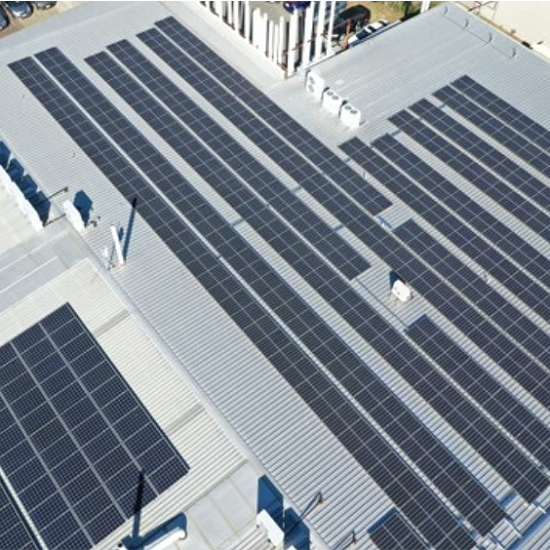Introduction: The Imperative of Power Factor Correction in Today’s Energy Landscape
In an age where energy efficiency is not just an option but a necessity, understanding the nuances of your electrical system can offer you substantial advantages. One term that is often discussed but rarely understood is “Power Factor.” In this guide, we’ll explore what Power Factor Correction is and why it’s crucial for maintaining optimal functionality in industrial and commercial settings.
As a certified engineer with years of experience in the energy sector, I can tell you that one of the most underappreciated yet pivotal factors in your energy consumption equation is the “Power Factor.” Ignoring it can lead to higher energy bills and increased wear and tear on your electrical equipment. That’s where Power Factor Correction comes into play. This educational blog aims to reveal the Power Factor Correction Advantages that are too significant to overlook.
Stay with me as we delve into the mechanics, benefits, and best practices of Power Factor Correction, and how integrating it can serve as a game-changer for your operation.
Power Factor Correction Advantages:
- Cost Savings: Reduces electricity bills by optimizing energy usage.
- Lower Demand Charges: Improves the power factor, thereby reducing the demand charges that are often levied by energy providers.
- Energy Efficiency: Makes the entire electrical system more efficient, which is not only good for your wallet but also for the environment.
- Equipment Longevity: Extends the lifespan of electrical machinery by reducing the wear and tear caused by poor power factors.
- Improved System Capacity: An optimized power factor allows your existing electrical system to carry more load, essentially freeing up capacity.
- Reduced Carbon Footprint: A more efficient power system means less energy is wasted, which aligns with sustainability goals and reduces greenhouse gas emissions.
- Improved Voltage: A better power factor can also result in improved voltage levels, enhancing the performance of electrical equipment.
- Enhanced Reliability: A corrected power factor reduces the risk of electrical system failures and improves its reliability.
- Regulatory Compliance: Many local or national energy regulations require certain power factor levels, and correction measures help in compliance.
- Increased Operational Efficiency: With all equipment running optimally, overall operational efficiency of a business or industrial setup improves.
- Ease of Scalability: An efficient electrical system makes it easier to add more machinery or expand operations.
Section 1: What is Power Factor? Understanding the Basics
What Exactly is Power Factor?
Power Factor is essentially a measure of how effectively your electrical system converts electric current into useful power output. Think of it like a fuel efficiency rating for your car, but for your entire electrical system.
Calculating Power Factor
The Power Factor is calculated by dividing the real power (measured in watts) by the apparent power (measured in volt-amperes). Mathematically, it’s often expressed as PF = Real Power / Apparent Power.
Ideal vs Real-World Power Factor
In an ideal world, the Power Factor would be 1, meaning 100% of the electrical energy is converted into useful work. However, in the real world, due to inefficiencies in the system, the Power Factor usually ranges between 0.8 and 0.95.
Example to Make it Clear
Imagine you have a blender. If the blender uses 500 watts (the real power) and has a Power Factor of 0.8, the apparent power it would draw is about 625 volt-amperes. It’s like having a car that could theoretically get 50 miles per gallon, but because of various inefficiencies, you only get 40 miles per gallon in real-world driving.
Layman’s Explanation
So, in simple terms, Power Factor tells you how well your electrical gadgets are at using the electricity they draw. A high Power Factor is like getting more miles per gallon with your car; it means you’re getting more bang for your buck.
Section 2: The Need for Power Factor Correction
How Does Poor Power Factor Impact Energy Costs?
A poor Power Factor can be an expensive problem to ignore. When the Power Factor is low, it means your electrical system is not efficiently converting the electric current into useful work. You’re essentially wasting electricity and, by extension, money. You’re also likely to incur penalty charges from your utility company for inefficient energy use.
Wear and Tear on Electrical Equipment
Besides just being inefficient, a poor Power Factor can also accelerate the wear and tear on your electrical equipment. Because more current flows to deliver the same amount of power, your machines and cables heat up faster, aging more quickly as a result. This means more frequent repairs and replacements, adding to your operational costs.
Why is Power Factor Correction Necessary?
The adverse effects of a poor Power Factor go beyond just financial implications. It can also lead to reduced electrical system capacity, overheating of transformers, and even power losses. To avoid these complications and to make your system more efficient, Power Factor Correction comes into play.
Layman’s Explanation
Think of Power Factor like the alignment on your car’s tires. If the alignment is off, not only does your fuel efficiency go down, but your tires wear out more quickly. Power Factor Correction is like getting your car’s alignment fixed so you save on fuel and your tires last longer.
Understanding why Power Factor Correction is necessary will help you appreciate its role in making electrical systems more efficient and sustainable. Plus, you’ll see its direct impact on reducing your operational costs.
Section 3: The Core Advantages of Power Factor Correction
3.1 Cost Savings
Reduced Electricity Bills
One of the most immediate benefits of Power Factor Correction (PFC) is the reduction in your electricity bills. By optimizing the amount of current used to perform work, you utilize electricity more efficiently, thus lowering your bills.
Lesser Demand Charges
Utilities often charge businesses based on their maximum demand for electricity. A poor Power Factor increases the apparent power (KVA) demand, incurring higher fees. PFC can reduce these demand charges substantially.
3.2 Energy Efficiency
How PFC Contributes to More Efficient Energy Use
PFC minimizes wasted energy, ensuring that the electricity you’re paying for gets used as efficiently as possible. This is crucial for businesses looking to maximize profitability while reducing operational costs.
Environmental Benefits
Because you’re using electricity more efficiently, fewer natural resources are needed to produce that electricity. This has a positive environmental impact by reducing the carbon emissions associated with electricity generation.
3.3 Equipment Longevity
How PFC Extends the Lifespan of Electrical Machinery
Reducing the strain on your electrical systems means less wear and tear. Machines run cooler and more efficiently, extending their service life and reducing maintenance costs.
3.4 Improved System Capacity
How Correcting the Power Factor Can Free Up System Capacity
By optimizing your Power Factor, you improve the efficiency of your electrical system, freeing up capacity for additional machinery or equipment without the need for system upgrades. This is particularly beneficial for businesses looking to expand or modernize.
3.5 Reduced Carbon Footprint
PFC’s Role in Sustainability and Corporate Social Responsibility
Improving your Power Factor means less electricity is wasted, which in turn means less carbon emissions. This not only helps the planet but also contributes to your organization’s Corporate Social Responsibility (CSR) goals.
Layman’s Explanation: Imagine if your car’s gas mileage improved dramatically after a simple tune-up, lasting longer while helping the environment. Power Factor Correction is similar; it’s like a ‘tune-up’ for your electrical system that saves you money, helps your equipment last longer, and is good for the Earth.
Section 4: Types of Power Factor Correction Equipment
Power Factor Correction (PFC) is not a one-size-fits-all solution. Various types of equipment are available to suit different applications and needs. Below is a brief overview of the most commonly used PFC equipment.
Capacitors
The most basic and commonly used PFC equipment is a capacitor. These are typically installed near the inductive load (like motors) and help to “offset” the inductive effects of the load, thereby improving the power factor.
Static Var Generators
Static Var Generators are more advanced and flexible than capacitors. They can dynamically adjust to varying load conditions in real-time, making them suitable for complex industrial environments.
Synchronous Condensers
These are essentially synchronous motors that run without any mechanical load. They can either supply or absorb reactive power as needed, offering a versatile way to correct the power factor.
Automatic PFC Panels
These panels automatically switch capacitors in and out of the circuit, depending on the power factor at any given moment. They are highly effective in scenarios where the load varies significantly throughout the day.
Dynamic PFC Units
These units use advanced electronics to dynamically correct the power factor. They can respond more rapidly to changes in the electrical load, making them useful in situations where fast correction is required.
Layman’s Explanation: Think of these different types of equipment as tools in a toolbox. Just like you wouldn’t use a hammer for every home improvement task, you wouldn’t use just any PFC equipment for all electrical situations. Some are basic and do the job well enough, while others are more sophisticated and handle complex challenges more effectively.
Section 5: Real-World Cases
In this section, we present a few case studies that demonstrate the tangible advantages of implementing Power Factor Correction (PFC) in different industries. These real-world examples will help you better understand the impact and benefits that PFC can bring to your operations.
Case Study 1: A Manufacturing Plant
Industry: Manufacturing
Location: Brisbane, Australia
Problem: High electricity bills, frequent equipment breakdowns
Solution: Installed capacitors near high-load machinery and implemented an Automatic PFC Panel
Outcome:
- Electricity bills reduced by 20%
- Equipment longevity increased by two years
- Improved energy efficiency, contributing to CSR goals
Layman’s Explanation:
Imagine your electricity bill is like a monthly grocery bill. By applying PFC, it’s like cutting out all the unnecessary items that you don’t actually need, ultimately saving you a good chunk of money. Plus, your electrical “appliances” (machinery) last longer!
Case Study 2: A Commercial Office Building
Industry: Real Estate
Location: Perth, Australia
Problem: Inefficient energy use, high demand charges
Solution: Installed Dynamic PFC Units in the main electrical room
Outcome:
- Demand charges reduced by 15%
- Overall energy efficiency improved
- Earned a better sustainability rating, making the property more marketable
Layman’s Explanation:
It’s like tuning up your car for better gas mileage. The building now uses energy more efficiently, which not only saves money but also makes the building more attractive to potential renters.
Case Study 3: A Dairy Farm
Industry: Agriculture
Location: Victoria, Australia
Problem: Unstable power supply affecting refrigeration units
Solution: Implemented a Static Var Generator
Outcome:
- Stabilized power supply, ensuring the safe storage of dairy products
- Reduced energy costs by 10%
- Improved equipment lifespan
Layman’s Explanation:
Think of a dairy farm’s electrical system as its circulatory system. By adding PFC, the farm has made sure that the “blood” (electricity) flows smoothly and efficiently, keeping all “organs” (machinery and refrigeration units) in top shape.
Each of these cases underscores the critical importance and benefits of implementing Power Factor Correction in commercial and industrial settings.
Section 6: How to Get Started with Power Factor Correction
Implementing Power Factor Correction is not a one-size-fits-all solution; it varies depending on your specific requirements and existing electrical setup. Here’s how to start the journey toward optimized power factor and energy efficiency.
Steps to Evaluate Your Power Factor Needs
- Conduct an Energy Audit: The first step is to understand your current energy consumption. This involves reviewing your electricity bills, demand charges, and machinery load among other things.
- Measure Your Current Power Factor: You’ll need specialized equipment to measure your existing power factor accurately. This step can typically be done by professionals specializing in electrical energy optimization.
- Identify High-Load Areas: Locate areas or machinery in your facility that are consuming the most reactive power, as these will be your prime candidates for correction.
- Consult an Expert: It’s advisable to get in touch with a certified electrician or energy consultant to evaluate your specific needs.
Layman’s Explanation:
Think of this process like going to a doctor for a check-up. First, they’ll ask about your habits (energy audit), then do some tests (measure power factor), find problem areas (high-load areas), and finally prescribe a treatment plan (consult an expert).
Selecting the Right PFC Equipment
- Fixed Capacitors: Best suited for locations with a stable load, these capacitors are the simplest form of PFC equipment.
- Automatic PFC Panels: Useful for fluctuating loads, these panels automatically adjust to maintain an optimal power factor.
- Dynamic PFC Units: These are ideal for rapidly changing loads and are often used in industries with heavy machinery.
- Static Var Generators: These are advanced PFC units that offer rapid response times and are best suited for highly inductive loads like motors and transformers.
Layman’s Explanation:
Picking the right PFC equipment is like choosing the right pair of shoes. You wouldn’t wear high heels for a hike, right? Each type of PFC equipment is designed for specific scenarios, so consult with an expert to find the best fit for your needs.
By understanding your specific requirements and working with experts in the field, you can select the most appropriate PFC equipment to optimize your power usage, reduce costs, and enhance the longevity of your electrical systems.
Conclusion: The Indispensable Value of Power Factor Correction
Power Factor Correction (PFC) is not just a ‘good-to-have’; it’s a ‘must-have’ for any business serious about optimizing its energy use, reducing operational costs, and contributing to environmental sustainability. In essence, implementing PFC can be likened to an investment that pays back in multiple dimensions—financially, environmentally, and operationally.
Layman’s Explanation:
Imagine your electrical system as a car. A poorly maintained car guzzles more fuel, breaks down often, and ultimately costs you more in the long run. PFC is like a comprehensive car service; it tunes up your electrical system to run more efficiently, saving you money and reducing wear and tear on the ‘engine’ (your electrical equipment).
Call to Action
If you’re convinced about the benefits but unsure about how to proceed, don’t hesitate to seek professional guidance. Our team of certified experts is ready to provide you with a thorough power factor assessment and offer tailored solutions that suit your specific needs and goals.
???? Call us at 1300 776 527
???? Visit our website: Target Solar
???? Drop by our office: Check what our client says
???? Or Contact Us for a free consultation.
Ready for Long-term Benefits? Act Now!
Don’t wait for rising energy costs to cripple your business. Act now and consult our power factor specialists to begin your journey toward optimized energy consumption and sustainable operational success.
Click here to request a comprehensive Power Factor Assessment from our experts.
By making the decision to invest in Power Factor Correction, you’re not just optimizing today; you’re future-proofing for a more efficient and sustainable tomorrow.
Error: Contact form not found.





